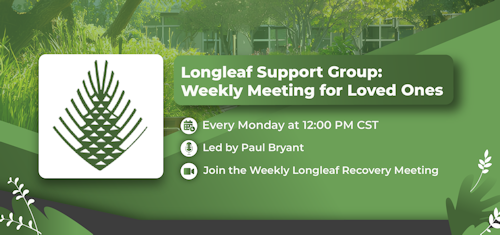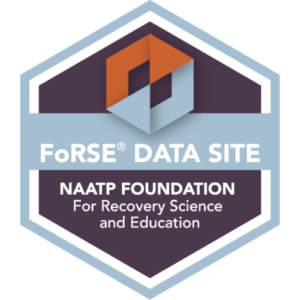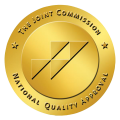The term “gateway drug” refers to substances like alcohol, nicotine, and marijuana that are perceived as potential entry points to more dangerous and addictive drugs. According to the gateway drug theory, using these milder, often legal or socially accepted substances can lower inhibitions, normalize drug use, and expose individuals to social circles where stronger drugs are more prevalent.
Proponents of the theory argue that initial exposure to these substances can initiate a pattern of substance use that may escalate to more severe drugs, such as cocaine, heroin, or methamphetamine. However, the theory does not suggest that everyone who uses a gateway drug will inevitably progress to harder substances. Instead, it proposes that the use of these initial substances increases the likelihood of such progression, which may eventually require drug rehab in Birmingham to address escalating addiction.
Despite its widespread discussion, the gateway drug concept remains controversial. Critics argue that the theory oversimplifies the complexities of addiction, ignoring other influential factors such as genetic predisposition, socioeconomic status, and mental health. Understanding both sides of the debate is crucial for a more nuanced perspective on substance use and prevention strategies.
The History Behind the Term “Gateway Drug”
The idea of a sequential pattern in drug use isn’t new. Early antecedents can be traced back to the “stepping-stone theory” discussed in the mid-20th century. However, the term “gateway drug” gained significant traction and prominence in the 1980s, largely in the United States, during the height of the “War on Drugs.”
Key figures like Dr. Robert DuPont, the first director of the National Institute on Drug Abuse (NIDA), were instrumental in popularizing the concept. His 1984 book, “Getting Tough on Gateway Drugs: A Guide for the Family,” brought the idea into mainstream consciousness. Around the same time, researcher Dr. Denise Kandel published influential studies based on longitudinal data, suggesting a predictable sequence in adolescent drug involvement, often starting with alcohol and tobacco, followed by cannabis, and then other illicit substances. Programs like Drug Abuse Resistance Education (D.A.R.E.) heavily incorporated the gateway drug message into their school-based prevention curriculum.
Factors That Influence Progression from Gateway Drugs
It’s important to understand that progression from gateway drugs to harder substances is not inevitable. A variety of factors can influence this path, including:
Research consistently shows that the earlier an individual begins using any substance, including gateway drugs, the higher their risk of developing substance use disorders. Early initiation of substance use also increases the likelihood of progressing to other, more addictive drugs later in life.
Genetics can play a significant role in an individual’s susceptibility to substance use and addiction. Having a family history of addiction can further elevate this risk, making it a critical factor to consider in prevention efforts.
Co-occurring mental health conditions such as depression, anxiety, ADHD, or trauma can significantly increase the risk of substance use as a form of self-medication. This behavior can potentially lead to more severe substance use disorders over time.
Environmental factors like family dynamics, peer influence, and socioeconomic conditions significantly impact substance use risk. Lack of parental supervision, exposure to drug-using peers, and adverse childhood experiences can increase the likelihood of experimentation, while strong family bonds can be protective.
Community norms that tolerate substance use, drug availability, and stressful living conditions further elevate the risk, emphasizing the need for targeted prevention efforts.
Certain personality traits, such as high impulsivity and sensation-seeking, have been linked to an increased likelihood of drug experimentation. Additionally, rebelliousness and low harm avoidance can further elevate the risk of progression to more harmful substances.
Is the Gateway Drug Theory Supported by Research?
Research on the gateway drug theory reveals a complex and evolving picture. Some studies suggest that early use of substances like alcohol, nicotine, or marijuana is linked to a higher risk of progressing to more dangerous drugs. Supporters of the theory argue that these substances can lower inhibitions, normalize risky behavior, and pave the way for harder drug use. Longitudinal studies back this view, showing that individuals who start using these substances at a younger age may be more likely to try other drugs later in life.
However, critics question the theory’s causal claims, noting that correlation does not equal causation. They argue that focusing on specific substances as “gateways” oversimplifies addiction, which is shaped by a mix of social, psychological, and genetic factors. Some researchers suggest that underlying issues—such as trauma, mental health challenges, or peer influence—may better predict later drug use than the type of substance first tried. This view shifts the focus from the drugs themselves to the deeper vulnerabilities that contribute to substance use disorders.
Adolescence and the Gateway Drug Theory
Adolescence is a critical period of brain development, especially in the prefrontal cortex, which governs decision-making, impulse control, and judgment. Because the brain is still maturing, it is more vulnerable to the effects of drugs, which can disrupt cognitive and emotional development and increase the risk of long-term addiction. Early use of substances like alcohol, nicotine, or marijuana can lower inhibitions and reinforce risky behaviors, setting the stage for future substance use.
This stage of life is also marked by heightened sensitivity to peer influence, making adolescents more likely to try substances if their peers do. Such normalization can lead to experimentation and potentially more serious drug use over time. Early drug use is also linked to negative outcomes like poor academic performance, risky sexual behavior, and involvement with the juvenile justice system. Preventing or delaying substance use during adolescence is a key public health strategy to safeguard long-term health and well-being.
Social and Environmental Influences on Gateway Drug Use
Substance use is not purely a personal choice—it is shaped by a range of social and environmental influences. Within families, parental attitudes, behaviors, and communication styles play a key role. Supportive and communicative family dynamics can protect against substance use, while inconsistent discipline or parental drug use can increase risk. Peer influence is especially strong during adolescence; associating with friends who use substances can normalize drug use and raise the likelihood of initiation.
The broader school and community environments also have significant impacts. Schools that foster academic engagement, maintain positive climates, and offer effective drug education can deter substance use. In contrast, schools with low engagement and high rates of drug use may elevate risk. At the community level, factors such as drug availability, poverty, and neighborhood instability contribute to early substance use. Additionally, media and cultural portrayals can glamorize drug use, while policies and enforcement practices influence both access to and perceptions of gateway drugs.
The Debate: Myth or Reality?
So, is the gateway drug theory a myth or a reality? The answer is complex and not a simple yes or no. There’s evidence that many people who develop substance use disorders often follow a sequence, starting with more accessible substances like alcohol or tobacco, then moving to marijuana, and potentially progressing to harder drugs. This pattern is well-documented, but the reasons behind it are still debated.
Some argue that these initial substances trigger changes in the brain or behavior that increase the risk of further drug use — the Causal Gateway Effect. Others, however, suggest that the sequence is driven by underlying vulnerabilities like genetics, psychological factors, or environmental influences — the Common Liability Model. Many experts now believe it’s a combination of both: certain individuals with pre-existing vulnerabilities may find that early substance use amplifies their risk of more severe drug involvement. Still, it’s crucial to remember that most people who try alcohol, tobacco, or marijuana do not go on to use harder drugs, highlighting the importance of understanding broader risk factors beyond the substances themselves.
Treatment and Support for Early-Stage Substance Use
If someone is already experimenting with gateway drugs, early intervention is crucial. Treatment options include:
Individual and group therapy can be highly effective in helping individuals identify and address psychological factors that may contribute to substance use. Cognitive-behavioral therapy (CBT), for instance, helps individuals recognize triggers, develop healthier coping mechanisms, and build skills to resist peer pressure. Motivational interviewing can also encourage individuals to reflect on their substance use and its impact on their lives, promoting readiness to change.
Engaging with support groups, such as Alcoholics Anonymous (AA), Narcotics Anonymous (NA), or other community-based programs, can provide a sense of connection and accountability. Peer counseling allows individuals to share experiences and learn from others who have faced similar challenges, fostering a sense of community and reducing isolation.
Substance abuse prevention programs can educate individuals about the risks associated with gateway drugs and equip them with skills to resist peer pressure. Programs that focus on building self-esteem, decision-making, and stress management are particularly beneficial for adolescents and young adults.
Strengthening family relationships is crucial in early intervention. Family therapy can improve communication, address family dynamics that may contribute to substance use, and create a more supportive home environment. Parents and caregivers can learn how to set clear boundaries, monitor behavior, and encourage positive choices.
Implementing a comprehensive, multi-faceted approach to treatment and support can help mitigate the risks associated with early-stage substance use and promote healthier, more positive life choices.

Break the Cycle: Understanding What Are Gateway Drugs and How Longleaf Recovery Can Help
Are you or someone you love struggling with gateway drug use? Don’t wait for it to escalate — early intervention can make all the difference. At Longleaf Recovery, we provide compassionate, evidence-based treatment tailored to help you break the cycle and reclaim your life. Connect with our team today to explore your treatment options and start your path to lasting recovery.







